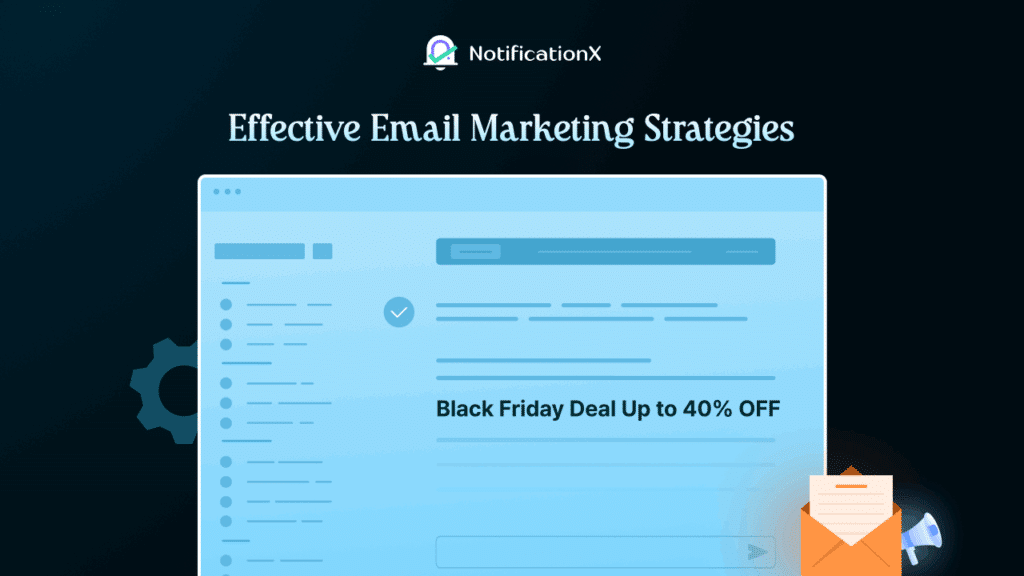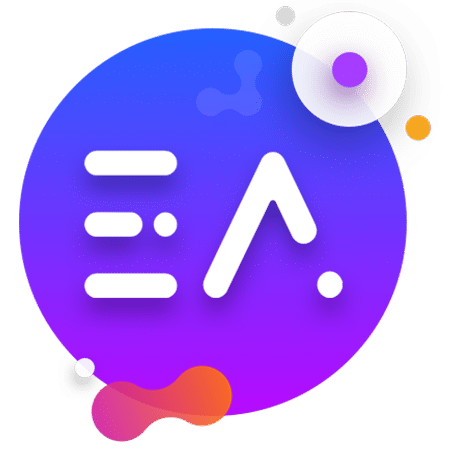Personalized marketing is the type of marketing strategy that is tailored based on customers’ data. This data includes customers’ demographic, behavioral and psychographic data, etc. Businesses use this strategy to better connect with their customers and give an optimized experience for better conversions.

As consumer expectations are rising, personalized marketing is no longer a competitive advantage; it is a necessity. With the proper personalized marketing strategy, businesses can now recognize customer preferences and connect with them. How? In this blog, we will see more about it.
Why Is Marketing Personalization Important for Any Business?
Everybody loves to feel valued. Personalized marketing helps businesses connect with customers by offering what they like. It builds trust and increases sales by meeting individual needs. Here is why customized marketing is essential for your business.
Proven Growth Strategy
Being more personal with your customers is a proven strategy for many brands. A study by Campaign Monitor shows that personalized emails have 2.5 times higher click-through rates and are 6 times more likely to drive a conversion. Regarding the shopping experience, 80% of frequent shoppers only shop with brands that personalize the experience.
These statistics indicate how customers accept personalized marketing strategies well. If this personalization strategy is done right, it also helps boost your business. In one experiment by Harvard Business Review, it was proven that revenue from the product grew by 38% from an eCommerce brand that showed the ad based on the user’s activity on the site. These insights prove, personalization not only boosts customer engagement but also significantly drives revenue and enhances overall marketing performance.
Connecting with Customers
Connecting with your customers means you can sense their needs and connect your product or service to them. Businesses are mostly about solving problems of their target customers. When you can properly identify the problem, you understand their needs, and solve that with your products and services. That means you can connect with them and you have done the right targeted marketing.
But beyond that, bringing content, campaigns, or offers based on the user’s purchasing behavior, or preferences it gives them a sense of being seen or understood. When customers feel that ‘get them’ feeling, they stay loyal and engage repeatedly with the brand. So, when businesses prioritize this authentic connection, it boosts customer satisfaction and helps to bring improvement in marketing strategies.
Build Stronger Relationships
Customer relationships with brands are built on trust and authenticity. By analyzing and understanding individual customer preferences, past interactions, businesses can create meaningful experiences for their customers. It will make the customer feel valued rather than another name on the mailing list.

Consistent personalized marketing engagement creates a sense of trust, a key ingredient in building stronger relationships. For example, Duolingo provides notifications to users who miss their learning streak for a day. So this helps users to maintain their learning streaks. What happens here is that Duolingo earned the customers’ trust that they will not miss their learning streak for a single day, because it is their responsibility to notify you about it. Thus, a stronger relationship with a brand is built.
Capturing Attention
Think about something, when in a crowd, someone suddenly calls your name, it will grab your attention immediately. Your digital products can do that too. When you give a notification, whether it is an email or an app notification, by mentioning the user’s name, it creates immediate attention. Sometimes this is not only about naming, it can be users’ behavior on the website or app, purchasing behavior, etc.
For example, if you add a product to the cart and forget about it, then the website can show the notification by mentioning your name, like this – ‘Mr. X, you forgot to check out.’ By mentioning the name, it immediately grabs the attention and leads the user to take action.
Positive Word of Mouth
Any personalized experience creates a long-lasting impression among many customers. This also increases the likelihood that they will discuss it further with their friends and family.

One of the best examples of positive word of mouth through personalized marketing is ‘Spotify Wrap’. At the end of every year, Spotify showed its users detailed information about the music they listened to over the year. This includes specific music genres, how many hours they listened, which artists they listened to the most, what the top songs they listened to the most are, etc.
They also provide the option to share this summary on social media platforms, allowing people to showcase their music taste on Instagram, Facebook, X, or any other social platform. This creates a positive word of mouth and people know about an individual’s music taste as well as Spotify gets a promotional branding through it.
How to Create a Successful Personalized Marketing Strategy?
Since you have already understood what is the importance of personalized marketing, it is more important to understand what the significant strategy you should maintain. Different businesses might have different approaches to personalization in marketing. But the core strategy always remains the same. Let us have a look at the step-by-step process.
Step 1: Gather Data and Understand the Audience
Gather all the necessary information about your audience. This includes their demographics, behavioural data, psychographics, and geolocation data.
Another type of data you can collect is their shopping behaviour, such as purchase data and add-to-cart behaviour, if you operate in an eCommerce landscape. Gathering this data helps to better map out the overall personalization strategy based on the customer’s behaviour.
Now, the question is how to collect this data? Different marketing tools, such as Google Analytics and Google Ads, can help gather data. For example, in Google Analytics, you can view demographic data, various traffic sources, and the number of active users. This data helps you better understand your audience and their behaviour on the website.
Step 2: Define Your Personalization Goals
Now that you have understood the audience, set up the specific goal that you want to achieve after creating a personalization strategy. Do you want to boost conversions? Or do you want to increase customer engagement? Or perhaps you want to build strong brand loyalty? These questions will shape the data collection process, which channels you should choose and what the achievement will be after implementing the strategy.
For example, an online fashion retailer brand might want to reduce the cart abandonment rate by 20%. To achieve this, personalized emails to the users who are abandoning the cart with a significant discount offer might help them achieve their desired goals.
Step 3: Map the Journey
You understood the behavior of your audience, you have set your goals, next, map out the journey of your customers. Understand the key touchpoints where your customization strategy will create a big impact.

Think about the previous online fashion retail brand’s reducing cart abandonment rate. To do this, the retail brand has to understand the customers’ buyer journey. After they sign up, they browse different products and add them to their cart. Now they are not buying it.
Based on their browsing behavior, that brand can give personalized emails suggesting different products. Here, let us say, according to the browsing behavior, customers only browse through products for summer. So, through personalized emails, the brand can suggest them sandals with their abandoned summer clothing with an exclusive offer.
Step 4: Choose the Right Tool
Now that you have mapped the journey, it is time to choose the right tool for your business. Choosing the right tool depends on your business size, budget, industry and complexity of personalization strategy. This can be a dynamic email marketing strategy, or an AI-driven product recommendation or content customization, the tool should fulfill your specific needs.
For instance, the previous fashion brand might use Mailchimp as their email marketing solution to give a reminder about the cart abandonment rate or to suggest different products. On the other hand, a newly launched platform might need to show who has just purchased the product to build trust and authenticity with the new users via NotificaçãoX.
Step 5: Keep Testing and Automate
After setting up all the steps, you need to keep testing the strategy. This includes your copies, your marketing strategy, marketing campaigns or marketing channels. There are a lot of testing methods available, such as A/B testing, to compare two versions and analyze which one works better, and content repurposing, to post the content again at different times and see how it performs. Multivariate testing to test different types of campaigns in different timeframes, etc.
In the previous fashion brand example, let us say email marketing didn’t fulfill the goal of reducing the 20% cart abandonment rate. There, you can either test out different copies for your email marketing or you can show in-app notifications to remind them. After getting the idea of which strategy works out, you can automate a similar process for all future customers.
Examples of Personalization in Marketing Across Different Channels
In the digital landscape, let us have a look at which channels you can implement personalized marketing examples and strategies, the right one for your business.
Email Marketing
One common example of personalised marketing is email marketing. When users sign up for a business, they typically begin with an email address. That makes it easier for companies to reach their audience and become more personalised.
Modern email marketing tools enable more personalisation by providing the first or last name of users, creating an automated journey from sign-up to unsubscribe, and generating email content for every stage. Additionally, these tools facilitate AI-generated email content, A/B testing of different emails, and more. Most of the tools also offer the option to unlock analytics by displaying the Email Open Rate and CTR (Click-Through Rate), enabling better decision-making.
Suggested Tools: Mailchimp, Hubspot
Targeted Ad Campaign
Different targeted ad campaigns can be a significant example of personalization. Platforms like Google Ads and social media networks show ad content and landing page suggestions based on a user’s online behavior and interests. This allows marketers to reach out to broader audiences.
With Google Ads, advertisers can set parameters such as age, gender, location, and behavioral data to refine the audience. The platform then delivers ads specifically to users who match these criteria, ensuring more precise targeting. Social media platforms offer similar capabilities, often enhanced with visually engaging formats like image or video ads. This targeted campaign works well because of the understanding of users’ behavior across the web.
Tools: Google Ads, Meta Business Suite.
Social Media Platforms
Social media platforms such as Facebook, X, LinkedIn, and Instagram can be a trendy example of personalized marketing. Through interacting with different pages or accounts, businesses can leverage the opportunity to connect with their customers.
In social media platforms, pages can go LIVE, share interactive videos, and launch UGC (User Generated Content) based on their followers’ behavior on those platforms. For example, if you have a fashion business, then you can promote it on Instagram or Facebook. On the other hand, if you have a SaaS platform, then X will be the best choice for your personalization marketing strategy. For small businesses growing network is important and that is why LinkedIn is a suitable platform.
Website Notifications
Personalized web notifications are helpful while running targeted campaigns, showcasing social proof through reviews, and encouraging email subscriptions.. Unlike traditional notifications, this allows you to engage with web visitors directly. If used thoughtfully, web notifications can reduce the user drop-off rate and lead to higher conversion.

For WordPress, this all-in-one notification solution is NotificaçãoX. Through different features such as the notification bar, discount alerts, showcasing WordPress reviews and sales alerts. Most importantly, its advanced customization options let you tailor notifications based on user location, behavior, and specific conditions. In the notification bar, you can customize your target audience based on their location, set scheduling and different conditions through user behavior for better targeting and a more personalized experience on your webpage.
Common Challenges of Personalization and How to Overcome
Even though the strategy is important, there are some challenges of personalization that every marketer faces while implementing them in their strategy. But with every challenge, there are options to overcome it. Let’s have a look at some of the key challenges.
Technology Constraint
The main challenge of personalization marketing is technological constraints. Personalization mostly depends on a large pool of data collection, gathering, analysis, and marketing automation. However, many businesses, specifically small and mid-sized companies, struggle in this situation because of outdated systems, fragmented data sources, limited marketing technology, or tools that do not integrate well with one another.
To overcome this situation, it is better to start with small or less complex tools. These tools have easy integration and offer built-in automation and segmentation features. Tools like Hubspot and ActiveCampaign offer less complexity and give more flexibility to users.
Strategic & Organizational Challenges
Organizations may have some strategic challenges, such as not having a clear goal and strategy. Without defined objectives, such as improving customer retention and increasing engagement, the strategy becomes inconsistent.
To overcome these challenges, a marketer needs a proper and clear objective of personalization. Also, setting specific goals and showing data-driven approaches to the organization shows why it is essential to utilize a personalized marketing strategy and enhance marketing tactics.
Data-Related Challenges
Marketers often face data-related challenges. Collecting and measuring data from different sources can be difficult. Sometimes, marketers struggle to collect customer data through different surveys due to a lack of communication.
To overcome this, marketers must communicate with customers regularly. Also, they need to understand the needs and utilize technology to collect the data through different analytical tools, such as Google Analytics and Meta Business Suite, to understand them better. It will help to refine and make a proper personalization tactic.
Personalized Marketing FAQs: Common Questions Answered
While learning about a successful personalized marketing strategy, many have some common questions. Here, some of the common questions are answered.
What Are the Benefits of Personalized Marketing?
Personalized marketing offers a lot of benefits that a business needs. Competitive advantage, increasing brand visibility, higher ROI, and increased conversions are some of these. These key benefits are explained in detail below –
Competitive Advantage: This strategy helps to put you ahead of the competition in your business niche. Not all businesses can implement personalization strategies due to a lot of limitations. Leveraging it and connecting with customers can help you stay ahead in the competition.
Increase Brand Visibility: Personalized marketing grabs immediate customers’ attention. That also increases the brand visibility among all the notifications or emails. So, customers get to know more about the brand.
Increase Conversion: As this increases brand visibility, it also increases the conversion rate. Because when you grab their attention through personalization, you also make them interested in purchasing your product. For example, mentioning them and offering them a discount offer only for them increases the chance of conversion.
Higher ROI: Personalized marketing leads to higher return on investment (ROI). That means whatever you invest in for personalization strategy, whether it is tools, marketing materials, content creation or anything else, it ensures you convert your customers and bring out the return from the invested sources.
What Are the Types of Personalized Marketing?
There are different types of personalized marketing. Here are some of the key types:
– Email Personalization: Creating customized emails that include personalized subject lines, email content based on individual data.
– Targeted Advertising: Running targeted ad campaigns based on users’ behavioral, demographic, and psychological data, which will lead to grabbing their attention on specific platforms like Google or Facebook.
– Dynamic Content: Adding content on the website based on visitors’ location, navigation behavior, and interests.
– Personalized Chatbot: Implementing an AI chatbot based on the user’s behavior to solve customer queries. This chatbot can also take historical data and an asking pattern to communicate with customers accordingly.
– Event Triggered Personalization: Make personalization-based marketing campaigns based on users’ specific actions, such as cart abandonment or buying behavior etc.
What Are the Four D’s of Personalization?
– Data, Decisioning, Design, and Distribution. These are the 4D’s of personalization marketing. In this term, ‘Data’ defines collecting and analyzing customers’ data, then with ‘Decision’, the decision is made on the data that is collected. ‘Designing’ involves creating personalized emails, notifications, and finally, with ‘Distribution’ selecting the right channels to reach out to the audience.
Can You Use AI to Personalise Your Marketing?
– Yes, you can. AI can make your personalization marketing tactic more effective and fruitful. With AI, you can automate the journey, use an AI chatbot or even create personalized content. This helps you to save time and focus more on campaign planning. For example, you can create customized copy through ChatGPT for a better personalization experience.
Give Personalized Experience through Marketing and Drive Impactful Results
In this modern age, it is not impossible to reach out to your target audience based on their demographics, behavioral patterns. With proper data collection and segmentation, you can personalize your business marketing strategy and connect with your audience more engagingly. To boost conversion and make a positive impact on customers, begin by implementing a proper personalized marketing strategy.
Was this blog helpful? Do not forget to share your opinion in our Comunidade do Facebook. To learn more about different marketing strategies or the latest updates on our products, inscreva-se no nosso blog.




